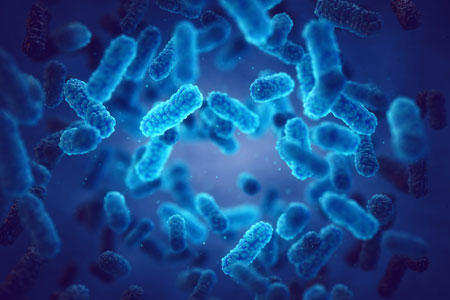
Biological Optimization
Biological Optimization
In aerobic biological treatment systems, aerobic (and facultative) bacteria utilize oxygen in the degradation (oxidation) of organic compounds. The dissolved oxygen (DO) concentration, pH, mixed liquor suspended solids (MLSS) concentration, sludge age (MCRT), food-to-microorganism (F:M) ratio, and nutrient level (nitrogen and phosphorus) are some of the critical parameters that determine the successful operation of a biological system. Historically, process control has focused on monitoring and controlling these parameters with little attention given to the nature and composition of the microorganisms beyond an occasional quick view of the MLSS under a microscope. The microorganisms (or biomass) in the bioreactor are the workers in a wastewater treatment system. The biomass is always in a state of flux, with different microbes dying while others are growing and becoming more dominant. Under adverse or stressed conditions such as toxicity, variable pH, low DO, excessive COD loading, and high (or low) wastewater temperature, certain bacterial populations may be reduced or eliminated, causing poor effluent quality. Under these stressful conditions biological systems can be very slow to recover.

In the bioreactor of an industrial wastewater treatment plant you can expect to find numerous strains of bacteria. This bacterial diversity is necessary because some types of bacteria degrade different compounds more effectively and efficiently than others. These bacteria generally are well suited to handle the contaminants in the wastewater and will become acclimated, over time, to provide a sufficient degree of treatment, assuming a steady-state operation is achieved. But few, if any, industrial wastewater systems ever achieve true steady-state operating conditions. The nature and composition of industrial waste streams change frequently. Variation in the wastewater composition may be due to changing production schedules, cleaning of process equipment, chemical spills in the production plant, or mechanical problems with equipment. Because of this variability, many industrial wastewater treatment systems have biological populations that neither grow to optimum levels nor achieve the required bacterial diversity. In this situation bioaugmentation becomes a valuable tool that can be utilized by the wastewater operator to improve the performance of the biological treatment system.
For more information about how to improve the biology of your plant or process, please let us know by filling out the form below or contacting your USP Territory Manager.
USP Technologies
5640 Cox Rd.
Glen Allen, VA 23060
Toll-free (800) 851-8527
Phone (804) 404-7696
USP - Canada
3020 Gore Road
London, Ontario N5V 4T7
Toll-free (800) 851-8527
Phone (804) 404-7696